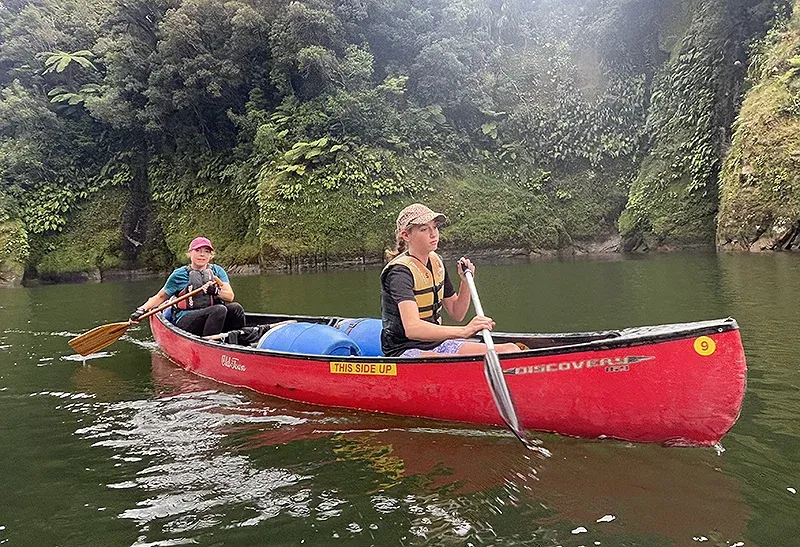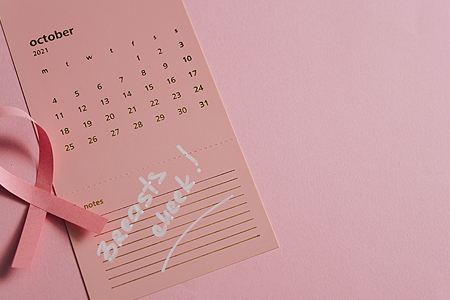Going with the flow on Whanganui River
By MAS Team
Paddling their way down the Whanganui River provided MAS Member Nicky Dewe’s family with stunning scenery, sore shoulders and some life lessons along the way.

It was my husband’s suggestion that our family of 4 – me, him, our 14-year-old daughter and 12-year-old son – should sign ourselves up for the Whanganui River Journey. He sold it as the perfect chance to put phones away, get off the grid and have a unique adventure together. It sounded, in theory, like a great idea.
For those not familiar, the Whanganui River Journey is the only one of New Zealand’s Great Walks that doesn’t actually involve walking. Instead, the trip is 3 days (or 5 for the more committed) of paddling your way through a mix of languid flows and speedy rapids surrounded by towering cliffs covered in lush emerald bush. It’s calm, quiet (apart from the occasional jet boat), beautiful and full of birdsong.
Does that sound dreamy and idyllic? Well let me be clear, it is also very, very tiring. When we set off the area had been going through a spell of dry weather and the river levels were unusually low. While this sounded like good news to me, it actually made things harder.
Because the river meanders along at a gentle pace, paddlers must put in maximum effort to move themselves forward. On the flipside, low water means the rapids move extra fast, so paddlers must put in maximum effort not to capsize and wind up in the drink.
I have to confess that I also struggled to get the hang of the steering. I spent a lot of time careering from one side of the river to the other while attempting to stay in a straight line. For those doing this trip with kids, you may also find yourself doing the lion’s share of the rowing while your co-pilot kicks back and performs the important job of ‘looking out for hazards’.
An added challenge: when you’re in the middle of a river there isn’t often the option to take a break. Stay still too long and you wind up spinning around and potentially pointing backwards. Periodically, however, there are little spots to park up – on a shingle bank or at one of the demarcated Department of Conservation (DOC) areas which usually features a shelter, a picnic table and a long drop. All the mod cons.
So it was that after a long 7-hour day of paddling, followed by heaving all our gear (which you store in big waterproof barrels in your canoe) up to the DOC hut, cooking a simple dinner and then bedding down in a dorm with 20 other people, my feelings towards my husband were less than charitable.
Why couldn’t we have spent a few days relaxing in a luxury lodge, I pondered, as I lay awake listening to the cacophony of snorers in the hut. The next morning, however, the river was calling again, and I was reminded of the old saying that ‘the only way out is through’. So, we rustled up some porridge, packed some sandwiches, put them within easy access at the top of a barrel and pushed off from the bank once again.

Over the course of the day I had to concede that when I wasn’t sending us off in crazy directions, I was able to appreciate the stunning patterns of sunlight playing on the water’s surface, spot waterfalls tucked into alcoves of the bush and have some great chats with the kids, on all kind of topics, uninterrupted by any of modern life’s usual distractions.
Eventually, I even got the hang of turning and braking, and realised (for the millionth time in my life) that letting yourself go with the flow is a lot more effective than trying to control the current. In this case the lesson was quite literal.
On the last day, we faced the biggest and fastest rapid of all. It’s known as the 50-50 to reflect the statistical likelihood of you falling out as you make your way through. I can’t tell you if there’s a particular technique for success, but I found that closing my eyes and hoping for the best worked a treat. I was genuinely shocked and elated to discover that my daughter and I had emerged still right-side up. Watching as other people weren’t so lucky was also pretty satisfying. To be clear, there’s no real danger if you fall out, it just means you end up a bit soggy and bedraggled for the final push to the finish.
When we reached the end of our journey, completing nearly 84km in total, I have to say I was on a real high. The trip wasn’t easy, but it was incredibly rewarding and I felt hugely proud of myself and my kids for achieving this awesome mental and physical challenge. And who knows? One day I may even forgive my husband.
Accommodation along the river is either huts or camping, both of which must be booked through DOC.
Transfers to and from the river, along with gear hire (canoes, paddles, barrels, dry bags) can be booked through independent operators. We used Ōwhango Adventures, who were great.

From self-checks to reading up on the symptoms, being more aware of breast cancer and its risks can help save your life.

We sat down with Jack Rogers, a Principal Consultant at Parker Bridge, who offered insights and tips for students entering the job market to help ease their nerves.

Looking for ideas for your next summer potluck? We’ve compiled 3 easy delicious recipes from 4 of New Zealand’s young up-and-coming foodies who understand what cooking as a student is really like.